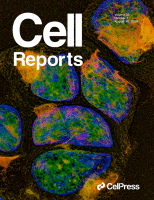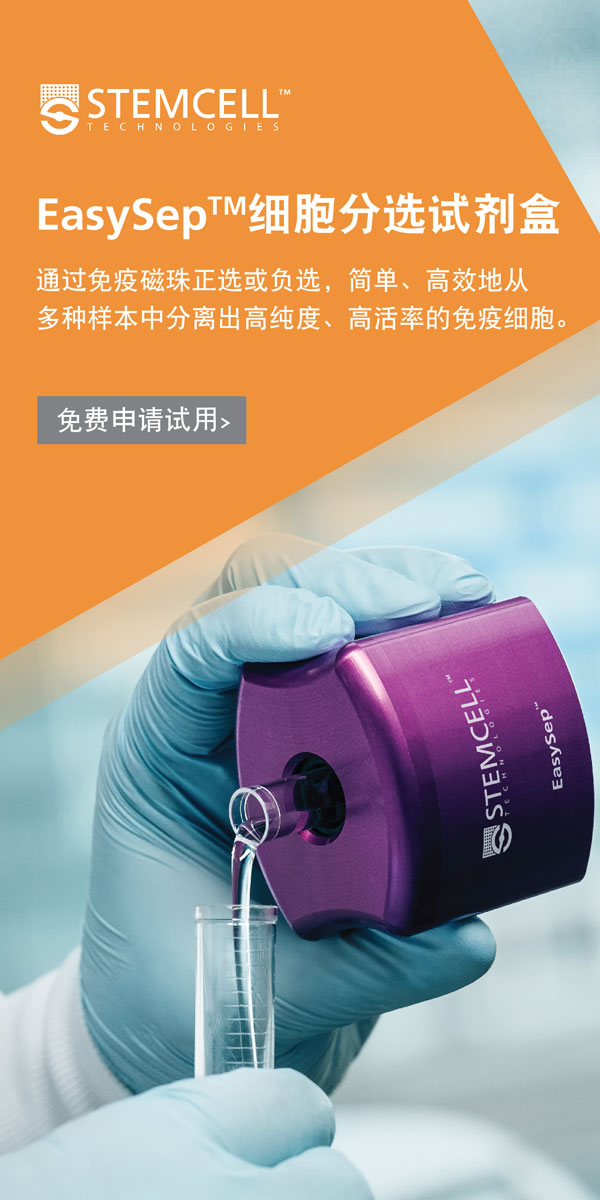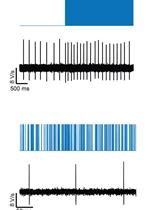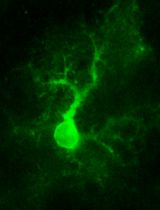- EN - English
- CN - 中文
A Lipidomics Approach to Measure Phosphatidic Acid Species in Subcellular Membrane Fractions Obtained from Cultured Cells
用脂质组学方法测定培养细胞亚细胞膜组分中磷脂酸的种类
发布: 2021年06月20日第11卷第12期 DOI: 10.21769/BioProtoc.4066 浏览次数: 3705
评审: David F DelotterieSébastien Gillotin

相关实验方案
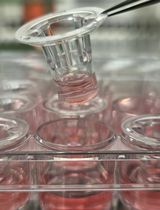
研究免疫调控血管功能的新实验方法:小鼠主动脉与T淋巴细胞或巨噬细胞的共培养
Taylor C. Kress [...] Eric J. Belin de Chantemèle
2025年09月05日 3445 阅读
Abstract
Over the last decade, lipids have emerged as possessing an ever-increasing number of key functions, especially in membrane trafficking. For instance, phosphatidic acid (PA) has been proposed to play a critical role in different steps along the secretory pathway or during phagocytosis. To further investigate in detail the precise nature of PA activities, we need to identify the organelles in which PA is synthesized and the PA subspecies involved in these biological functions. Indeed, PA, like all phospholipids, has a large variety based on its fatty acid composition. The recent development of PA sensors has helped us to follow intracellular PA dynamics but has failed to provide information on individual PA species. Here, we describe a method for the subcellular fractionation of RAW264.7 macrophages that allows us to obtain membrane fractions enriched in specific organelles based on their density. Lipids from these membrane fractions are precipitated and subsequently processed by advanced mass spectrometry-based lipidomics analysis to measure the levels of different PA species based on their fatty acyl chain composition. This approach revealed the presence of up to 50 different species of PA in cellular membranes, opening up the possibility that a single class of phospholipid could play multiple functions in any given organelle. This protocol can be adapted or modified and used for the evaluation of other intracellular membrane compartments or cell types of interest.
Keywords: Lipidomics (脂类组学)Background
The acyl chain diversity in glycerophospholipids has been studied for decades; however, technical and conceptual limitations have restricted our understanding of its contribution to cell function. Among the phospholipids, phophatidic acid (PA) plays an important role as an intermediate metabolite in glycerophospholipid metabolism and has also been suggested to display key signaling functions. Chemically, PA consists of a glycerol backbone, to which two fatty acyl chains and a phosphate are attached, through esterification, at positions sn-1, sn-2, and sn-3, respectively (Tanguy et al., 2019a). The unique feature of PA as compared with other glycerophospholipids is its phosphomonoester link to a small anionic phosphate headgroup (Tanguy et al., 2018). The small headgroup of PA is thought to adopt a cone-shaped structure in membranes, which has often served as an explanation for its contribution to diverse membrane trafficking events (Ammar et al., 2013; Tanguy et al., 2016). However, despite many implications, the precise functions of PA in these membrane trafficking events remain unclear. The diversity of the PA biosynthetic routes, together with the possible occurrence of many different PA species based on their fatty acyl chain composition, opens up the possibility for multiple roles in a given cellular function, which prompted us to develop a method to characterize the profile of the different PA species in different membrane organelles.
Macrophages are the crux of many innate immune responses to invading pathogens or danger signals for which the contribution of PA produced by phospholipase D (PLD) has been well established in phagocytosis (Corrotte et al., 2006; Tanguy et al., 2019b). However, despite evidence suggesting that PA levels increase at the plasma membrane during phagocytosis, there is little data available on PA dynamics in additional membrane compartments regarding the species involved. We took advantage of a frustrated phagocytosis assay that occurs when macrophages are exposed to immobilized immune complexes in culture and spread as if trying to engulf them, which is believed to mimic some key steps of the phagocytic process (Labrousse et al., 2011). Hence, we describe a protocol for subcellular fractionation, followed by lipid extraction and the quantitation of PA species by advanced mass spectrometry-based lipidomics analysis. These approaches allowed us to obtain quantitative information regarding PA species composition in specific organelles during frustrated phagocytosis.
Materials and Reagents
Calibrated pipetman and pipette tips of any brand
10 cm cell tissue culture dishes, Falcon (Fisher Scientific, catalog number: 353003)
15 ml Falcon tubes (Dutscher, catalog number: 352097)
50 ml Falcon tubes (Dutscher, catalog number: 352070)
Cell scrapers, Falcon (Fisher Scientific, catalog number: 353085)
Centrifuge tubes (thinwall, ultra-ClearTM, 14 ml, 14 × 95 mm) (Beckman Coulter, catalog number: 344060)
Cryovials (Nalgene, Dutscher, catalog number: 028001)
RAW264.7 cells (ATCC, catalog number: TIB-71)
RPMI-Glutamax medium (Gibco, catalogue number: 61870-044)
Fetal bovine serum (FBS) (Gibco, catalogue number:16030-074)
DMSO (Fisher Scientific, catalog number: BP231-100)
Trypsin/EDTA (Gibco, catalogue number: 25300-054)
Sucrose (Sigma-Aldrich, catalog number: S9378-500G)
Penicillin/streptomycin solution 100× (Pen/Strep) (Sigma, catalogue number: P4458-100ml)
Coomassie Brilliant Blue G-250 (Thermo Fisher Scientific, catalog number: 100-25)
Novex 4-12% Bis-Tris SDS-PAGE gels (Invitrogen, catalogue number: NP0322BOX)
Polyclonal rabbit anti-BSA IgG (Thermo Scientific, catalog number: A11133)
Polyclonal Sheep anti-BSA IgG (Euromedex, catalog number: GTX77113)
Chloroform (HPLC grade, Sigma, catalogue number: C2432)
Methanol (HPLC grade, Sigma, catalogue number: 34860)
Disposable culture tubes and their phenolic caps, PTFE liners (Corning, catalog number: 99447-13 and 9998-13)
Internal standard 17:0/17:0 PA that can be noted 34:0_17:0, with the first number reflecting the total carbons in both fatty acids and the second number corresponding to the number of carbons in the fatty acid at the sn1 position (Avanti Polar lipids, catalog number: 830856)
Formic acid, 98% (Sigma, catalog number: 33015)
Ammonium hydroxide solution (Sigma, catalog number: 221228)
Glycerol (Merck, catalog number: 104093)
SDS (Sigma, catalog number: L4509)
Tris-HCl (Sigma, catalog number: 25285-9)
β-mercaptoethanol (Sigma, catalog number: M3148)
HEPES free acid (Sigma, catalog number: H4034)
EGTA (Sigma, catalog number: E4378)
MgCl2 (Sigma, catalog number: M9272)
OptiPrep Solution (Sigma, catalog number: D1556)
Isopropanol (Sigma, catalog number: I9516)
Vials and caps for injection (Agilent, catalog number: 5183-2067 and 5190-1599)
Tissue culture freezing media (see Recipes)
2× Laemmli buffer (see Recipes)
Isolation medium (see Recipes)
Gradient media (see Recipes)
LC solvent (see Recipes)
Solvent A and solvent B
Equipment
Incubator at 37°C with 5% CO2
Centrifuge (Eppendorf, model: 5810)
Ultracentrifuge (Beckman Coulter, model: CO-LE80K)
Pre-chilled swing bucket rotor (Beckman Coulter, model: SW41)
NuPage Novex protein electrophoresis apparatus (Invitrogen)
Western blotting apparatus transblot turbo (Bio-Rad)
Ultrasonic bath sonicator (Liebisch)
Evaporator under N2 flow (Organomation)
Ultra-high-performance LC 1290 Infinity II LC System (Agilent)
Qtrap 6500 Mass spectrometer (Sciex)
Luna C8 150 × 1 mm column, with 100 Å pore size, 5 μm particles (Phenomenex)
Dounce homogenizer and pestle (Sigma, catalog number: P0735-1EA)
Software
Analyst software, version 1.7.1 (Sciex) and Analyst Device Driver for Agilent 1.3 (Sciex)
Multiquant software version 3.0.3 (Sciex)
Procedure
文章信息
版权信息
© 2021 The Authors; exclusive licensee Bio-protocol LLC.
如何引用
Kassas, N., Fouillen, L., Gasman, S. and Vitale, N. (2021). A Lipidomics Approach to Measure Phosphatidic Acid Species in Subcellular Membrane Fractions Obtained from Cultured Cells. Bio-protocol 11(12): e4066. DOI: 10.21769/BioProtoc.4066.
分类
免疫学 > 免疫细胞功能 > 巨噬细胞
神经科学 > 细胞机理 > 胞内信号传导
您对这篇实验方法有问题吗?
在此处发布您的问题,我们将邀请本文作者来回答。同时,我们会将您的问题发布到Bio-protocol Exchange,以便寻求社区成员的帮助。
Share
Bluesky
X
Copy link


